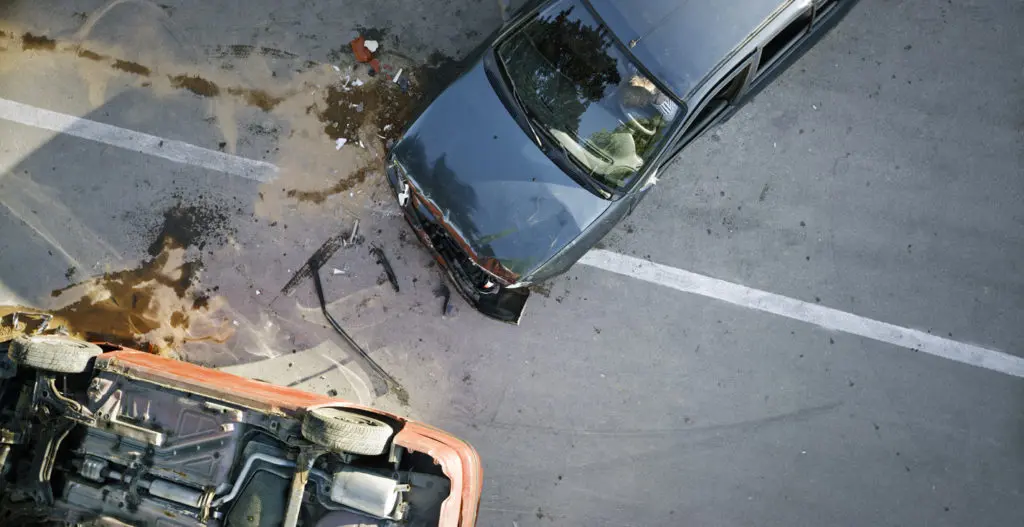Safe Driving – Survive a Car Accident
Ask people what they’re most afraid of, and “car accident” almost never tops the list. Usually, you’ll get responses such as “shark attack,” or “robbery.” Statistically-speaking, however, there’s a greater chance of being killed by your car – car accidents account for 2.09% of all deaths – on the way to the beach or the lake, than by a shark (0.000000002%) or a thief (0.98%). In fact, over 5.2 million traffic accidents send nearly 3 million to the hospital and 35,000 to the morgue, every year.
Still, traffic fatality and injury rates are stagnating, which seems to indicate that, though there are more car accidents, they’re more survivable. Traffic laws, safety regulations, and vehicle safety systems play a large part in making car accidents survivable, but driver habits may play an even larger role. Even if you don’t drive a newer car with more safety features, here are five driver habits you should consider making part of your routine to survive a car accident.
Avoid a Car Accident
Of course, the best way to survive a car accident is to avoid getting into an accident in the first place. The NHTSA (National Highway Traffic Safety Administration) calculates that more than 95% of all car accidents are due to driver error. Drivers make mistakes every day, and those sometimes lead to car accidents.
To avoid making those errors, practice driving and learn the skills you need to survive. Take a driver course or even a racer course to learn skills like evasive maneuvers, emergency braking, or skid recovery. In Winter, find an empty parking lot to practice taking off, slowing down, and turning on slippery surfaces. Do not count on vehicle safety systems to “make up for” driving too fast or over your skill level!
Drive within the speed limit, accounting for traffic and visibility conditions, as well as your own skill. Higher speeds increase the risk of losing control – don’t count on vehicle safety systems to protect you in case you lose control! In traffic, don’t follow anyone too closely. Follow the three-second rule to give yourself time and space to react to other drivers. Pay close attention to what’s going on around you and far ahead of you. Eliminate distractions, such as fiddling with the radio or talking on the phone, and don’t text and drive!
Never drive while you are fatigued or under the influence of alcohol or drugs. Even OTC medicines, such as for pain or allergies, can impact your ability to drive and react to quickly-changing traffic and road conditions.
Let’s assume, for the rest of this article, that a car accident is unavoidable. In this case, only your wits are going to save you.
Seatbelts Save Lives
It might seem obvious, and it’s the law almost across the country – only New Hampshire doesn’t have mandatory seatbelt laws for passengers over 18 years of age. Nevertheless, seatbelt use statistics prove that mandatory seatbelt use significantly increases the chance of surviving a car accident, even in vehicles with robust safety systems. Whether you’re the driver, front passenger, or rear passenger, wear your seatbelt every trip.
Loose Objects
Even basic vehicle safety systems do a good job of protecting you from most impact threats from outside the vehicle, but do nothing to protect you from threats inside the vehicle. In an accident, inertia turns loose objects into missiles. At 60 mph, a tissue box might not hurt you, but a smartphone, a bag of groceries, or even your dog might kill you. Anything that can’t be secured by a seatbelt should be stowed in the trunk or truck bed, where it can safely impact something outside the cabin.
Water Landing
Unless you live in a desert, there’s a chance that an accident could send you into a water-filled ditch, stream, river, lake, or reservoir. “In case of a water landing,” knowing how to swim could save your life and the lives of your passengers. Don’t even bother trying to open a door, as water pressure will make this impossible. A car escape tool could be a lifesaver in case of such an accident, but make sure it is secured to the floor so it doesn’t become a loose object in a crash.
In case you end up in the water, don’t panic. Instead, calmly assess the situation and move to escape the vehicle as soon as possible. If the vehicle is sinking, the engine will pull the nose down first, leaving a pocket of air in the rear of the vehicle. Unbuckle your seatbelt and get everyone else to do the same. Move to the back seat, take a deep breath, and break the rear glass to get out of the car.
After the Crash
After surviving the initial impact of the car accident, you are not out of danger, especially if you are in traffic. Other vehicles may be unable to slow down fast enough to avoid you, and get involved in the accident themselves. Secondary impacts can be just as dangerous, if not more so, than the initial impact.
If your car is on fire or you can see clearly an escape route, exit the vehicle quickly and get as far from traffic as possible. If you can’t be sure of the situation outside your vehicle, it may be safest to wait for emergency personnel to extract you from your vehicle.
Dobbs Tire & Auto Centers
Keeping your vehicle in good condition also helps you avoid car accidents or minimize the impact. Your tires, brakes, suspension, and safety systems all play a part. With over forty years of experience, serving the St. Louis area, Dobbs Tire & Auto Centers has the training and experience to keep your car running safely and efficiently. Stop in one of our 43 locations and ask how servicing your car can keep you safe on the road.

